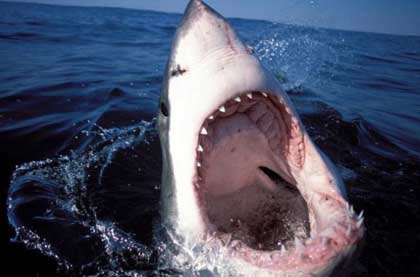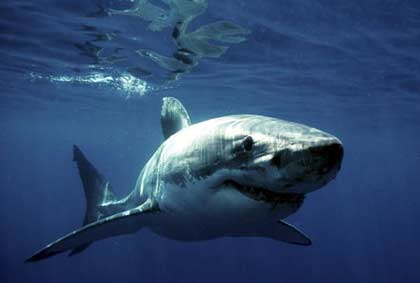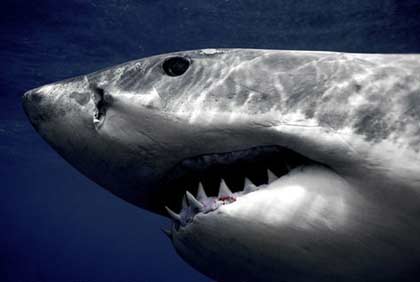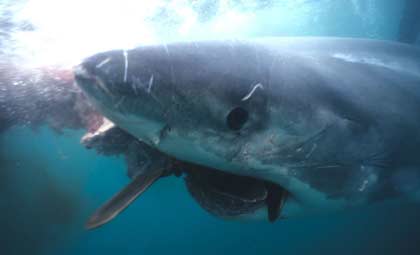Humans are mesmerized by sharks through a blend of fact and superstition, legend and reality, and concerns about the unknown. A little knowledge about them can turn underwater excursions into amazing experiences.
Here are 20 facts about sharks:
1. Great white sharks can grow approximately 24.5 cm each year. When fully grown, they can measure between 3.6 to 4.2 meters in length.
2. New teeth continuously form in a shark’s jaw. They are typically replaced every 8 days.

3. Some species of sharks can grow up to 30,000 teeth in their lifetime.
4. Whale sharks have about 300 rows of teeth, with each row containing hundreds of tiny ones.
5. Shark skin (shagreen) was once used as sandpaper. In Germany and Japan, shark skin was wrapped around sword handles to prevent slipping.
6. In 1937, shark liver oil was discovered to be very rich in vitamin A. Consequently, from then until 1950, they were hunted to extract this vitamin until a new synthetic method for producing vitamin A was developed.
7. The average lifespan of a shark is around 25 years, but some species can live up to a century.
8. Dogfish sharks are named for their hunting behavior, which resembles that of packs of wild dogs.
9. Great white sharks can survive for up to 3 months without eating anything.
10. Not all sharks need to breathe continuously.
11. Bull sharks can tolerate varying salinity and often live in rivers and freshwater lakes in Africa and South America.
12. The number of people who die each year from dogs, pigs, and deer is greater than those who die from sharks.

13. The Pygmy shark has a maximum length of 28 cm.
14. Sharks do not have bones. Their skeletons are made of cartilage.
15. Science has identified over 340 species of sharks.
16. Sharks first appeared in fossil records over 400 million years ago.
17. A significant physical feature that differentiates modern sharks from ancient ones is the protruding jaw, which allows modern sharks to have a stronger bite force.
18. Sharks can generate a bite force of about 6.5 tons per square inch (1 inch = 2.54 cm).
19. Shark skin is textured with tiny protrusions similar to teeth.
20. The shortfin mako shark is possibly the fastest fish in the ocean, reaching speeds of about 96 km/h.

How Sharks Attack:
There are three basic types of situations in which sharks may attack without provocation:
1. “Bump and Bite” is the most common type of attack. These usually occur in turbulent waters. Victims rarely see the shark, and it does not return after inflicting a bite or tearing injury. Most of these attacks are the result of mistaken identity, occurring in murky water and harsh environmental conditions like choppy waves and strong currents. Victims often sustain injuries to their lower legs and rarely face life-threatening situations.
2. “Bump and Bite” typically results in more severe and potentially fatal injuries. These attacks often involve divers or people swimming in deeper waters. The shark will usually circle around and often bump into the victim before the actual attack begins.
3. “Sneak Attack” occurs without any warning. The shark will repeatedly bite or clamp down on the person in its mouth. The injuries are often severe and can be fatal. It is believed that this type of attack results from hunting behavior rather than a mistake.

How to Avoid Shark Attacks:
1. Swim in groups. Sharks tend to attack individuals swimming alone. Avoid entering the water at night, dawn, or dusk.
2. Do not enter the water if you are bleeding. Sharks can smell and detect the scent of blood, tracking it back to its source. Avoid wearing shiny jewelry. Sharks may mistake it for glimmering fish scales.
3. Do not splash excessively. This can attract them. If you see a shark in the water, do not approach or attempt to touch it.
T. An


















































